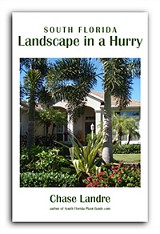Plant Fertilization
for South Florida
Plant fertilization in South Florida's sandy soil is key to a beautiful landscape.
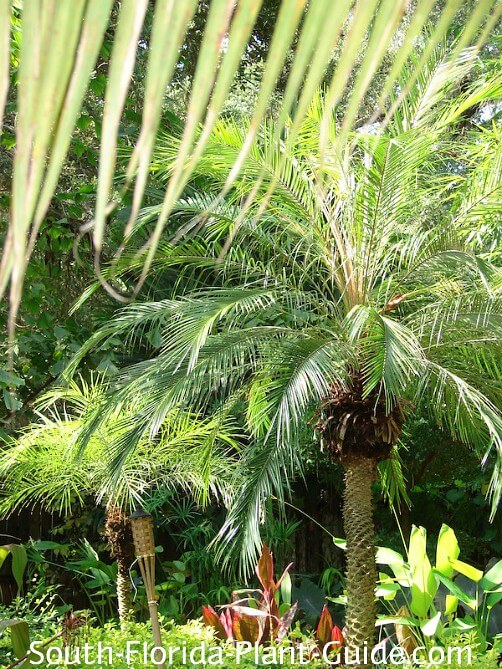
Our soil basically has no nutritional value, so feeding your plants is important to their health and beauty...and it's easy to do, once you learn the basics.
NOTE: There is a fertilizer blackout beginning June 1st and ending September 30th. This means it's illegal in many Florida counties to fertilize your lawn and gardens during this time. So do your spring fertilizing early (mid-March), your summer one around the end of May, and fall feeding October 1st. (Call your county extension office to see if the blackout is in effect where you live.)
Types of fertilizers
Slow-release granular
This is the easiest, most economical method of garden fertilizing.
Every time the plant gets watered, it takes up a bit more of the fertilizer.
Controlled-release fertilizer
Osmocote® 14-14-14 or Nutricote® 13-13-13 will not burn plants so you can apply it closer to plants than slow-release.
You can broadcast it (though avoid letting it sit on leaves) or
sprinkle right by the plant's base.
Controlled-release is activated with watering AND warm temperatures.
Use it on everything - especially good for a closely planted space and among groundcover plants.
Liquid fertilizer
Water soluble ones like 20-20-20 can be used more often than granules.
A plant takes up liquid fertilizer quickly...and even faster if you spray it directly on the leaves. Drenching the base of a well-watered plant (you must water first) works just fine.
Because it's used right away by the plant, liquid must be done more often to be effective.
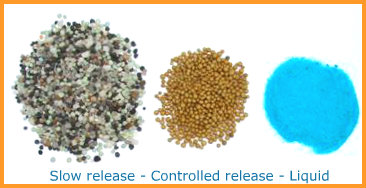
What do the numbers mean?
The numbers on a bag of fertilizer represent the content of three major elements plants need.
The first number stands for nitrogen (N).
The last number stands for potassium (K).
The middle number? On granular slow-release fertilizers, it's now zero, zip, nada. This used to be reserved for phosphorus (P), a natural element that is essential for flowering plants.
Fertilizer DONT'S
Don't buy cheap fertilizers. It's like dog food - the premium brands put in more meat and less filler. Same with fertilizers.
Don't add fertilizer to the hole when you plant. And wait till the plant's been in the ground at least a month before beginning plant fertilization.
Don't rake it in...fertilizer can go right on top of mulch.
The blooming problem...and a few solutions
The EPA has now targeted phosphates, one of Florida's largest industries due to our natural phosphate deposits. In many states, phosphates have been banned from dishwashing detergents.
And in Florida, phosphorus has been removed from most fertilizers due to a controversial theory that using it in plant fertilization promotes algae bloom - "red tide" - a NATURAL PHENOMENON in the Gulf of Mexico.
So here are other ways to promote blooms in flowering plants:
- Bone meal - Pull back any mulch and sprinkle about a cup per average-sized bush around each plant. Work in into the soil a bit, then water in lightly and replace the mulch.
- Liquid fertilizer - Supplement your granular with a drench of 20-20-20 or other liquid at least once a month.
- Controlled-release fertilizer - Use instead of slow-release granules. It costs more but it still contains phoshorus and has the added benefit of being non-burning so you can apply it closely around plants.
Which fertilizer for which plant?
Slow-release fertilizers are economical, easy to use, and should have numbers on the bag the same as (or similar to) the following:
An all-purpose fertilizer such as 7-0-7 works for fertilizing shrubs like crotons, ixoras, green shrubs, palms and trees.
Flowering shrubs such as plumbago, hibiscus and bougainvillea like 2-0-10. Supplement with other bloom boosters to make up for the lack of phosphorus.
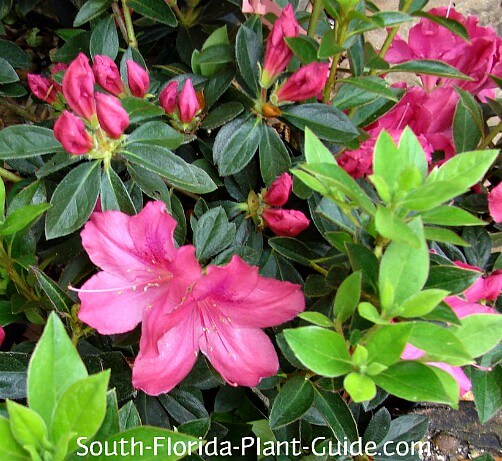
For fertilizing azaleas and gardenias, use 7-0-8.
Citrus fertilizer is 4-0-8, with higher potassium content for stronger roots and branches.
Slow-release granules should include micro and macro elements such as manganese, magnesium, zinc and iron to give your plants a well-balanced meal.
How much fertilizer to use
Shrubs - 1 pound for every 4 feet of height
Trees - 1 pound for every 4 feet of height
Palms - 1 pound for every 4 feet of clear trunk
Citrus - 1 pound per foot of branch spread (example: for a 10 foot wide canopy, use 10 pounds)
How to apply fertilizer
Slow-release granular: Spread around the base of a plant or tree AT THE DRIP LINE (the farthest foliage point). This places the fertilizer at the area of feeder roots, and keeps it from burning surface roots.
Water in lightly to keep the granules in place. When fertilizing citrus, water the area under the tree first so surface roots don't get burned.
Controlled-release: Apply near the base of the plant and then water it in lightly.
Liquid: Water well and give your plants at least an hour to absorb the water. Then apply liquid as a leaf spray or as a small drench around the plant's base.
When to apply fertilizer
Plant fertilization with slow-release granules should be done at least 3 times a year - once each in spring, summer and fall.
You can, however, feed plants more often, or use combinations of other kinds of nutritional supplements along with the basic slow-release granular type.
Avoid plant fertilization during winter. Plants don't utilize much fertilizer during cold weather, and any tender new shoots brought on by feeding can be damaged by cold.
Controlled-release is best done 3 or 4 times a year during warmer months.
Liquid is great anytime, but again, during warmer weather is best. To encourage bloom, green things up and promote health, apply liquid once a week for 3 weeks (but only after a good watering). Skip a week. Then do another 3 week regimen.
NOTE: Some plants prefer feeding less often - see the Plant Pages for the needs of each plant.
Plants with special fertilizing needs
Azaleas and gardenias shouldn't be fertilized after October. You can use essential minor elements (EME) in winter, and then apply slow-release AFTER the spring bloom. Fertilize again in mid-summer.
For palms that appear yellowish, use manganese and magnesium palm supplements to green them up.
Orange bird of paradise often needs extra plant fertilization to begin flowering.
Supplement granular fertilizers with the regimen of
liquid described above.
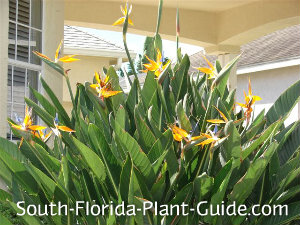
To keep bougainvillea flowering as much as possible, cut it back a bit after each bloom cycle and apply bloom-boosting fertilizer.
Container plants benefit from controlled-release and/or liquid fertilizers.
Take a break!
The ultimate guide to low-maintenance plants
and landscaping!
An ebook by
Chase Landre
author of
South-Florida-Plant-Guide.com
Learn more!
Get a greener thumb!
Want to learn more about South Florida planting, watering, fertilizing and dealing with weeds and pests?
See our Gardening How-To section for answers!
Get instant curb appeal!
An ebook by
Chase Landre
author of
South-Florida-Plant-Guide.com
Learn how to get instant curb appeal with fast growing plants and landscaping techniques!
